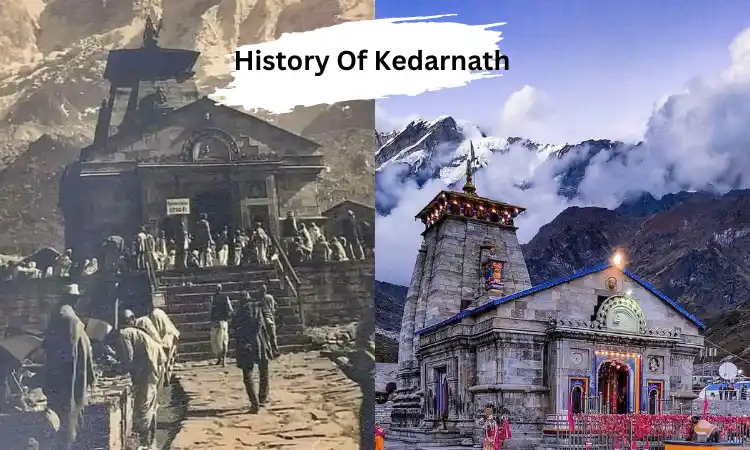Kedarnath, located in Uttarakhand, is one of the holiest pilgrimage places in India. It is a part of the Char Dham Yatra. People believe that visiting
Kedarnath, located in Uttarakhand, is one of the holiest pilgrimage places in India. It is a part of the Char Dham Yatra. People believe that visiting Kedarnath helps them achieve salvation (moksha). This site is surrounded by snowy mountains, green valleys and beautiful rivers.
Kedarnath is not just a place for spiritual peace it also has a famous history that attracts many visitors. It is mentioned in several historical books and texts. In this guide, we will explore Kedarnath history and why it is an important holy place for many pilgrims.

The Origin of Kedarnath Temple
This happened after the Mahabharata war, when the Pandavas defeated the Kauravas in the battle of Kurukshetra. On Sage Vyasa’s advice, the Pandavas went to Kedarnath, where they made a small Shivling and temple to pray to Lord Shiva for forgiveness for killing their cousins. Since then, it is believed that the Pandava brothers found this holy place.
Significance of Temple
According to Hindu tradition, Lord Shiva took the form of Jyotirlinga. There are 12 Jyotirlingas and this temple is one of the most important among them. This temple was restored (repaired) by Adi Shankaracharya. After that, people from around the world still visit it as an important place of worship.
Nara and Narayana’s Devotion to Lord Shiva
The other story is about Nara and Narayana, two Hindu Gods. They went to worship Parvati, and Lord Shiva appeared. They requested him to stay there in his original form for the benefit of humanity. Shiva agreed, and from that moment, Kedarnath became his home.
Kedarnath Temple Covered in Snow for 400 Years
Geologists believe that from around 1300 to 1900 AD, the temple was under the ice for nearly 400 years, during the Little Ice Age. Scientists from the Wadia Institute of Himalayan found yellow lines on the temple walls that show effects of glaciers. Although the temple was buried in snow, it was not badly damaged. Inside, the stones look brighter because of movement of glaciers. Scientists also observed that the temple was built to fit the land and survive natural disasters, which helped it stay strong over the years.
2013 Floods
The Kedarnath valley, along with other areas in Uttarakhand, was badly affected by sudden flash floods on June 16 and 17, 2013. Thousands of people died, and the area was heavily damaged. Miraculously, the temple was unharmed, even with all the damage around it. Many people believed that it was Lord Shiva’s divine power. After the disaster, the government and local officials worked hard to rebuild the city and nearby areas.
Kedarnath Today
Now there are improved roads, helicopters and better trekking routes to reach easily. It is an important part of the Char Dham pilgrimage, along with Badrinath, Gangotri and Yamunotri. Many devotees visit here for inner peace, blessings and spiritual fulfillment. Even after many challenges this place remains strong that shows how important it is for many pilgrims and an inspiration for future generations.
COMMENTS